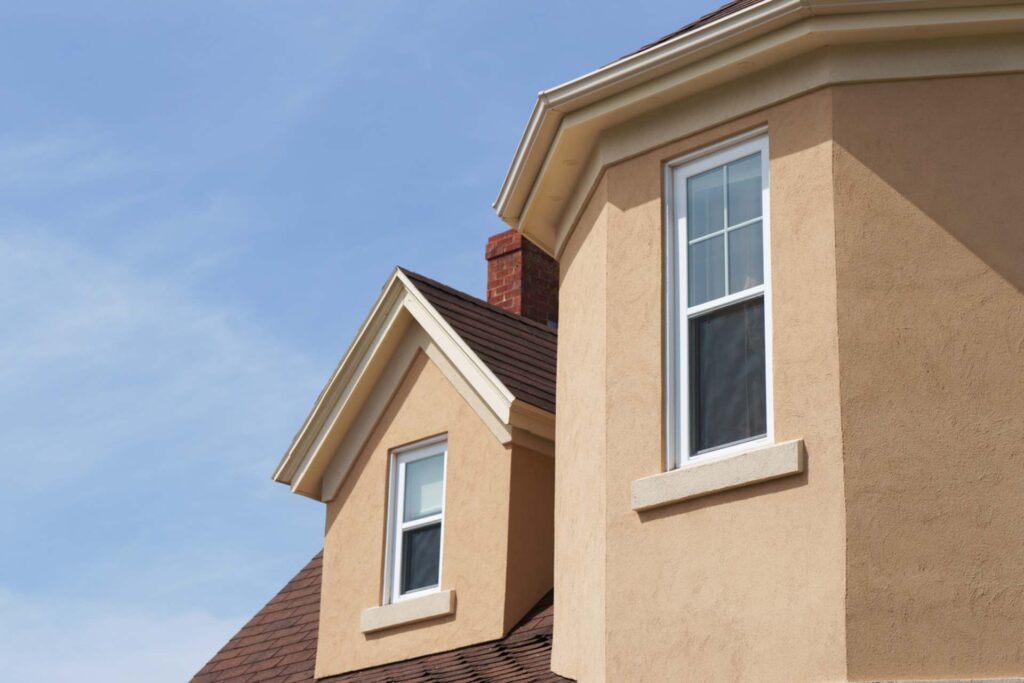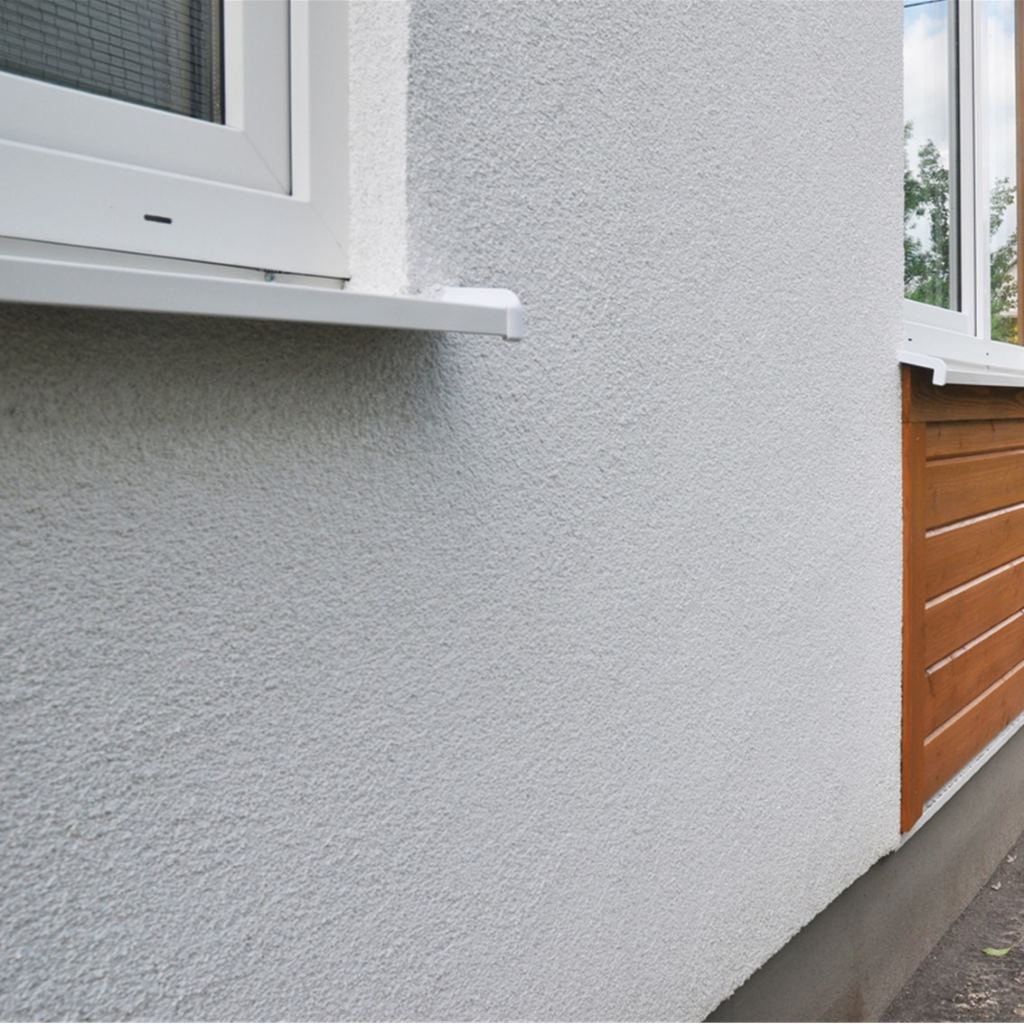Adding siding to your property can be an efficient way to both secure your home and revamp its aesthetics at the same time - but what’s the best material to use for siding? Both stucco and vinyl are popular choices, and today we’re going to give you a complete rundown of each, comparing each material when it comes to insulation, costs, curb appeal and maintenance. Let’s take a look!
Vinyl Siding
Characteristics and Material
Vinyl siding is made from PVC (polyvinyl chloride), and is one of the most versatile and resilient siding materials on the market. Despite its durability properties, it’s also incredibly lightweight, making it easy to install. From a visual standpoint, vinyl is also a great choice; you can find vinyl in a variety of different colors and styles, and you can even get vinyl that mimics the authentic textures of natural materials like stone and wood. On top of this, vinyl is also resistant to moisture, rot, and pests, making it a practical choice for various climates.
Advantages of Vinyl Siding
One of the primary benefits of vinyl siding is its low maintenance; it doesn’t require painting or staining, and its color remains vibrant for years, and can even resist fading under harsh environmental conditions. Vinyl siding is also cost-effective, both in terms of initial installation and long-term maintenance.
And as we mentioned above,vinyl is also incredibly durable, capable of withstanding severe weather without warping, cracking, or fading. So if you’re looking for vinyl siding in Denver, we at Rise Renovation offer cost-effective, high-quality materials and professional installation for every home.
Vinyl Siding Disadvantages
While vinyl siding is an excellent choice for home siding, it can be susceptible to damage under extreme conditions, such as very high temperatures or direct impacts. However, these issues are minimal in typical residential settings, especially when professionally installed.
Stucco
Composition and Characteristics
Stucco is a mixture of cement, lime, sand, and water, and is typically applied in several layers over a metal or wooden lath. It can be identified by its textured, solid appearance and is often used in Mediterranean or Spanish architectural styles.
Advantages of Stucco
One of the main reasons Stucco is popular is due to its curb appeal, and the seamless appearance it can provide to a home’s exterior. It’s also relatively durable and can last many years if properly maintained. In addition to this, stucco is fire-resistant and can provide a certain level of sound insulation.
Stucco Disadvantages
However, stucco siding has many dissuasive drawbacks when compared to vinyl siding: most notably, Stucco is much more labor-intensive to install and therefore can be more expensive, both in terms of materials and labor costs. Stucco can also be prone to cracking due to settling or seismic movement, and repairing these cracks can be costly and time-consuming. On top of this, in climates with frequent moisture, Stucco can absorb water, leading to potential mold and mildew issues which can be both costly and hazardous.
Vinyl vs. Stucco: Key Considerations

Design Options and Visual Appeal
When considering design options and visual appeal, vinyl siding offers far greater versatility than stucco; despite Stucco’s standout appearance, vinyl comes in a wide array of colors and textures, including imitations of wood and stone. Stucco, while offering a unique look, is limited in terms of color and texture variations, and can also be challenging to modify once applied.
Lifespan and Durability
In terms of lifespan and durability, vinyl siding is again the winner: it’s designed to withstand the elements, from heat to freezing temperatures, without significant deterioration, and this resilience translates to a long lifespan, often outlasting stucco. While durable, stucco will usually require more frequent repairs and maintenance, especially in environments prone to seismic activity or extreme weather fluctuations.
Insulation Properties
Insulation is another key benefit of home siding, so is Stucco or vinyl better? Generally speaking, modern vinyl siding options often now include built-in insulation, which can significantly improve a home's energy efficiency. This means that the added insulation helps maintain a consistent internal temperature in your home, reducing the need for extensive heating and cooling, and lowering your energy bills.
On the other hand, stucco does provide some natural insulation due to its thickness and composition - however, it generally doesn’t perform as well as insulated vinyl siding in terms of thermal resistance.
Repairability and Upkeep
Finally, repairability and upkeep are also important to consider, especially if you want to opt for something low-maintenance that doesn’t require constant replacing or fixing. If this applies to you, vinyl is your best option: known for its ease of maintenance, it typically requires only occasional cleaning with soap and water to maintain its appearance. And in the event of damage, individual panels of vinyl siding can often be replaced easily and inexpensively, so most repairs are straightforward.
Conversely, stucco requires more meticulous upkeep; cracks and damage will usually need to be repaired promptly to prevent water infiltration and further deterioration, and these repairs can be more complex and costly in comparison to a simple vinyl panel replacement.
Making an Informed Decision
Overall, if we weigh the options between vinyl siding and stucco, it’s clear that vinyl siding is the standout winner; its cost-effectiveness and low maintenance - combined with energy efficiency, and ease of repair - make it the superior choice when it comes to budget concerns and practicality. While stucco has its unique aesthetic appeal, the practical benefits of vinyl siding, - especially in terms of long-term costs and upkeep - make it the winning choice for a durable, attractive, and economical home exterior.
